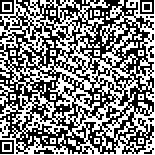| 摘要: |
| [摘要] 目的 分析传染病医院工作人员发生HIV职业暴露的特点及危险因素,探讨职业暴露的防护措施,减少职业暴露发生。方法 采取回顾性分析,对该院2012-01~2014-12工作人员发生HIV职业暴露个案登记表进行整理分析。结果 41例职业暴露中,护士职称21例,占51.2%,护师职称8例,占19.5%,主管护师职称2例,占4.9%,护理人员共31例,占75.6%。保洁人员5例,占12.2%,主治医师、医师各2例,各占4.9%。23例发生在留置针拔针封管环节,占56.1%,9例发生在注射抽血环节,占22.0%,5例发生在处理医疗废物环节,占12.2%。职业暴露发生方式以针刺伤为主,有31例,占75.6%,其次为血液、体液飞溅至眼睛黏膜10例,占24.4%。结论 加强职业安全培训,严格执行标准防护措施及遵守各项操作规程,建立完善、简便的职业暴露报告制度及处理流程,并加强管理,严格落实,可预防HIV职业暴露的风险。 |
| 关键词: 传染病医院 职业安全 防护 |
| DOI:10.3969/j.issn.1674-3806.2017.10.02 |
| 分类号:R 51;R 183 |
| 基金项目:南宁市科学研究与技术开发计划项目(编号:20133171) |
|
| Countermeansures for occupational safety management of preventing HIV in infectious diseases hospital |
|
LIU Dong-mei
|
|
Department of Infection Management, the Fourth People′s Hospital of Nanning City[Guangxi Center for AIDS Clinical Treatment(Nanning)], Guangxi 530023, China
|
| Abstract: |
| [Abstract] Objective To analyze the features and risk factors of occupational exposure for medical staff and to explore the prevention of occupational exposure in infectious diseases hospital.Methods The data of the workers with occupational exposure to human immunodeficiency virus(HIV) among the medical staff from January 2012 to December 2014 in our hospital were respectively analyzed.Results Among the 41 cases with occupational exposure to HIV, 21 cases were nurses(51.2%), 8 cases were nurse practitioners(19.5%), 2 cases were supervisor nurses(4.9%), 31 cases were nursing attendants(75.6%), 5 cases were cleaning workers(12.2%), and 2 cases were attending physicians(4.9%) and physicians(4.9%) respectively. 23 cases exposed to HIV while withdrawing and sealing the indwelling needles(56.1%). 9 cases exposed to HIV while injecting drugs or drawing blood(22.0%). 5 cases exposed to HIV while disposing the medical waste(12.2%). The main causes for occupational exposure were needling(75.6%) and splashing of blood or body fluid into the mucous membrane of eyes(24.4%).Conclusion Professional safety training should be strengthened. The standard prevention measurements and the regulation complying with operations should be strictly implemented. The complete and convenient reporting system and addressing procedure of professional exposure should be established to reinforce the management and to prevent the risk of HIV occupational exposure. |
| Key words: Infectious diseases hospital Occupational safety Prevention |

